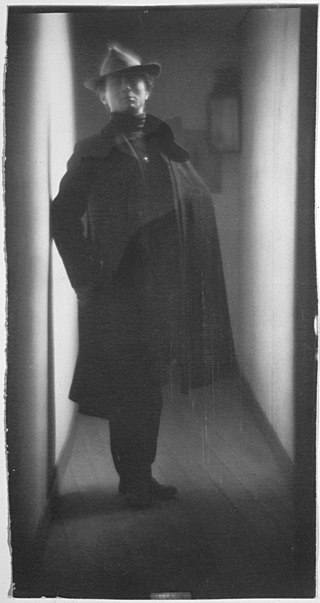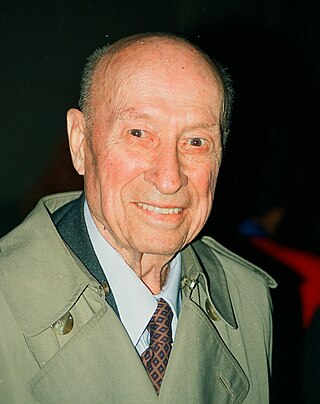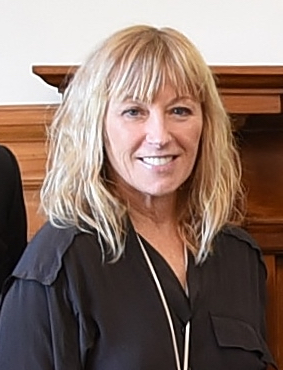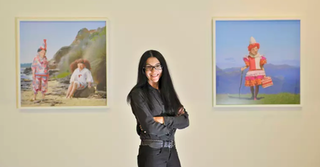Related Research Articles

Wolfgang Tillmans is a German photographer. His diverse body of work is distinguished by observation of his surroundings and an ongoing investigation of the photographic medium’s foundations.

Edward Jean Steichen was a Luxembourgish American photographer, painter, and curator, renowned as one of the most prolific and influential figures in the history of photography.

Jeffrey Wall, OC, RSA is a Canadian photographer. He is artist best known for his large-scale back-lit Cibachrome photographs and art history writing. Early in his career, he helped define the Vancouver School and he has published essays on the work of his colleagues and fellow Vancouverites Rodney Graham, Ken Lum, and Ian Wallace. His photographic tableaux often take Vancouver's mixture of natural beauty, urban decay, and postmodern and industrial featurelessness as their backdrop.
Uta Barth is a contemporary German-American photographer whose work addresses themes such as perception, optical illusion and non-place. Her early work emerged in the late 1980s and 1990s, "inverting the notion of background and foreground" in photography and bringing awareness to a viewer's attention to visual information with in the photographic frame. Her work is as much about vision and perception as it is about the failure to see, the faith humans place in the mechanics of perception, and the precarious nature of perceptual habits. Barth's says this about her art practice: “The question for me always is how can I make you aware of your own looking, instead of losing your attention to thoughts about what it is that you are looking at." She has been honored with two National Endowments of the Arts fellowships, was a recipient of the John Simon Guggenheim Fellowship in 2004‑05, and was a 2012 MacArthur Fellow. Barth lives and works in Los Angeles, California.

Harry Morey Callahan was an American photographer and educator. He taught at both the Institute of Design in Chicago and the Rhode Island School of Design.
Frank Gohlke is an American landscape photographer. He has been awarded two Guggenheim fellowships, two fellowships from the National Endowment for the Arts, and a Fulbright Scholar Grant. His work is included in numerous permanent collections, including those of Museum of Modern Art, New York; the Metropolitan Museum of Art; and the Art Institute of Chicago.

Cynthia Morris Sherman is an American artist whose work consists primarily of photographic self-portraits, depicting herself in many different contexts and as various imagined characters.
Sherrie Levine is an American photographer, painter, and conceptual artist. Some of her work consists of exact photographic reproductions of the work of other photographers such as Walker Evans, Eliot Porter and Edward Weston.

Alexis Jan Atthill Hunter was a New Zealand painter and photographer, who used feminist theory in her work. She lived and worked in London UK, and Beaurainville France. Hunter was also a member of the Stuckism collective. Her archive and artistic legacy is now administered by the Alexis Hunter Trust.

Dayanita Singh is an Indian photographer whose primary format is the book. She has published fourteen books.
Linda Connor is an American photographer living in San Francisco, California. She is known for her landscape photography.

Laurie Simmons is an American artist best known for her photographic and film work. Art historians consider her a key figure of The Pictures Generation and a group of late-1970s women artists that emerged as a counterpoint to the male-dominated and formalist fields of painting and sculpture. The group introduced new approaches to photography, such as staged setups, narrative, and appropriations of pop culture and everyday objects that pushed the medium toward the center of contemporary art. Simmons's elaborately constructed images employ psychologically charged human proxies—dolls, ventriloquist dummies, mannequins, props, miniatures and interiors—and also depict people as dolls. Often noted for its humor and pathos, her art explores boundaries such as between artifice and truth or private and public, while raising questions about the construction of identity, tropes of prosperity, consumerism and domesticity, and practices of self-presentation and image-making. In a review of Simmons's 2019 retrospective at the Museum of Contemporary Art, Chicago, critic Steve Johnson wrote, "Collectively—and with a sly but barbed sense of humor—[her works] challenge you to think about what, if anything, is real: in our gender roles, and our cultural assumptions, and our perceptions of others."
Collier Schorr is an American artist and fashion photographer best known for adolescent portraits that blend photographic realism with elements of fiction and youthful fantasy.
Dana Hoey is a visual artist working with photography, using "the camera to reveal the inner life of women, especially young women." Her photographs are often ambiguous and have multiple meanings. In 1999, in an exhibition entitled Phoenix she showed a series of seventeen black-and-white photo-prints and one forty-one-foot-long digital billboard image; writing in Frieze, Vince Aletti said, "the exhibition is a mystery that bristles with clues but is ultimately unsolved; perhaps it is unsolvable." In her introduction to the catalog for Hoey's 2012 exhibit, The Phantom Sex, at the University Art Museum, University at Albany, curator Corinna Ripps Schaming wrote, "Using both staged and directed photography, her meticulously constructed pictures speak to her deep knowledge of the art and its ability to conflate fact and fiction. Her seemingly spontaneous pictures are choreographed through simple directives and are subject to her ruthless editorial eye, which is always attuned to bringing social dynamics to the fore."

Elad Lassry is an American artist who lives and works in Los Angeles.

Polixeni Papapetrou was an Australian photographer noted for her themed photo series about people's identities. Photo series she has made include Elvis Presley fans, Marilyn Monroe impersonators, drag queens, wrestlers and bodybuilders and the recreation of photographs by Lewis Carroll, using her daughter as a model.
Torbjørn Rødland is a Norwegian photographic artist, whose images are saturated with symbolism, lyricism, and eroticism. His 2017 Serpentine Gallery solo exhibition was titled The Touch That Made You and travelled to the Fondazione Prada in Milan in 2018. His work was shown at the Venice Biennale of 1999. An early retrospective was held at the Astrup Fearnley Museum of Modern Art in Oslo in 2003.

Picture for Women is a photographic work by Canadian artist Jeff Wall. Produced in 1979, Picture for Women is a key early work in Wall's career and exemplifies a number of conceptual, material and visual concerns found in his art throughout the 1980s and 1990s. An influential photographic work, Picture for Women is a response to Édouard Manet's Un bar aux Folies Bergère and is a key photograph in the shift from small-scale black and white photographs to large-scale colour that took place in the 1980s in art photography and museum exhibitions. It is the subject of a monographic book written by David Campany and published as part of Afterall Books' One Work series.
Liz Deschenes is an American contemporary artist and educator. Her work is situated between sculpture and image and engages with post-conceptual photography and Minimalism. Her work examines the fluidity of the medium of photography and expands on what constitutes the viewing of a photograph. Deschenes has stated that she seeks to "enable the viewer to see the inconstancy of the conditions of display, which are always at play but sometimes hard to see." Her practice is not bound to a single technology, method, process, or subject, but to the fundamental elements of photography, such as light, paper, chemistry, and time.
Sarah Hobbs is an artist. Hobbs is from Lynchburg, Virginia. She lives and works in Atlanta.
References
- 1 2 "Anne Collier born 1970". Tate. Retrieved 10 March 2023.
- ↑ Dillon, Brian (March 2006). "Anne Collier". Frieze Magazine . Archived from the original on 21 February 2015.
- ↑ Rosenberg, Karen (26 April 2012). "Anne Collier". The New York Times. ISSN 0362-4331 . Retrieved 5 November 2022.
- 1 2 3 4 5 Paik, Sherry (2021). "Anne Collier Biography, Artworks & Exhibitions". Ocula. Archived from the original on 5 November 2022. Retrieved 5 November 2022.
- ↑ "Anne Collier". Corvi Mora. Archived from the original on 23 September 2015. Retrieved 10 March 2015.
- ↑ "Anne Collier's C.V." (PDF). Anton Kern Gallery. Archived from the original (PDF) on 20 January 2017. Retrieved 10 March 2015.
- ↑ Robertson, Rebecca (20 November 2014). "Anne Collier's MCA Chicago Retrospective Explores the Male Gaze". ARTnews. Archived from the original on 25 September 2021. Retrieved 5 November 2022.
- 1 2 "Anne Collier". CCS Bard. 2014. Archived from the original on 24 November 2020. Retrieved 10 March 2015.
- ↑ Yerebakan, O.C. (29 August 2014). "Annandale-on-Hudson – Anne Collier at CCS Bard Galleries Through September 21st, 2014". Art Observed. Archived from the original on 20 April 2021. Retrieved 5 November 2022.
- ↑ Collier, Anne; Als, Hilton (2017). "Women with Cameras (Anonymous)". Worldcat. Retrieved 5 November 2022.
- ↑ Thorne, Harry (January 2021). "Anne Collier - Galerie Neu". Art Forum. Archived from the original on 26 January 2022. Retrieved 5 November 2022.
- ↑ Hamilton, Diana (9 May 2018). "Anne Collier: Reducing Women To Tears". Frieze Magazine. No. 196. ISSN 0962-0672. Archived from the original on 13 June 2022. Retrieved 5 November 2022.
- ↑ "Anne Collier". Art Gallery of Ontario. 2016. Archived from the original on 23 December 2021. Retrieved 12 September 2015.
- ↑ "Anne Collier". Museum of Contemporary Art Chicago. 2014. Archived from the original on 3 June 2022. Retrieved 12 September 2015.
- ↑ Respini, Eva (2012). "New Photography 2012 - Anne Collier". MoMA. Archived from the original on 18 April 2021. Retrieved 12 September 2015.
- ↑ "Anne Collier". The Guggenheim Museums and Foundation. Archived from the original on 5 November 2022. Retrieved 5 November 2022.
- ↑ "Anne Collier". The Art Institute of Chicago. Retrieved 10 March 2023.
- ↑ "Anne Collier". The Guggenheim Museums and Foundation. Retrieved 10 March 2023.
- ↑ "Anne Collier". Institute of Contemporary Art, Boston. Retrieved 10 March 2023.
- ↑ "Anne Collier". LACMA Collections. Retrieved 10 March 2023.
- ↑ "Anne Collier". Museum of Contemporary Art Chicago. Retrieved 10 March 2023.
- ↑ "Anne Collier". Museum of Contemporary Art, Los Angeles. Retrieved 10 March 2023.
- ↑ "Anne Collier". Museum of Modern Art. Retrieved 10 March 2023.
- ↑ "Anne Collier". Museum of Modern Art in Warsaw. Retrieved 10 March 2023.
- ↑ "Women With Cameras (Anonymous)". NMWA Library & Research Center. Retrieved 7 March 2023.
- ↑ "Collier, Anne". SFMOMA. Retrieved 10 March 2023.
- ↑ "Anne Collier". Walker Art Center. Retrieved 10 March 2023.
- ↑ "Anne Collier". Whitney Museum of American Art. Retrieved 10 March 2023.